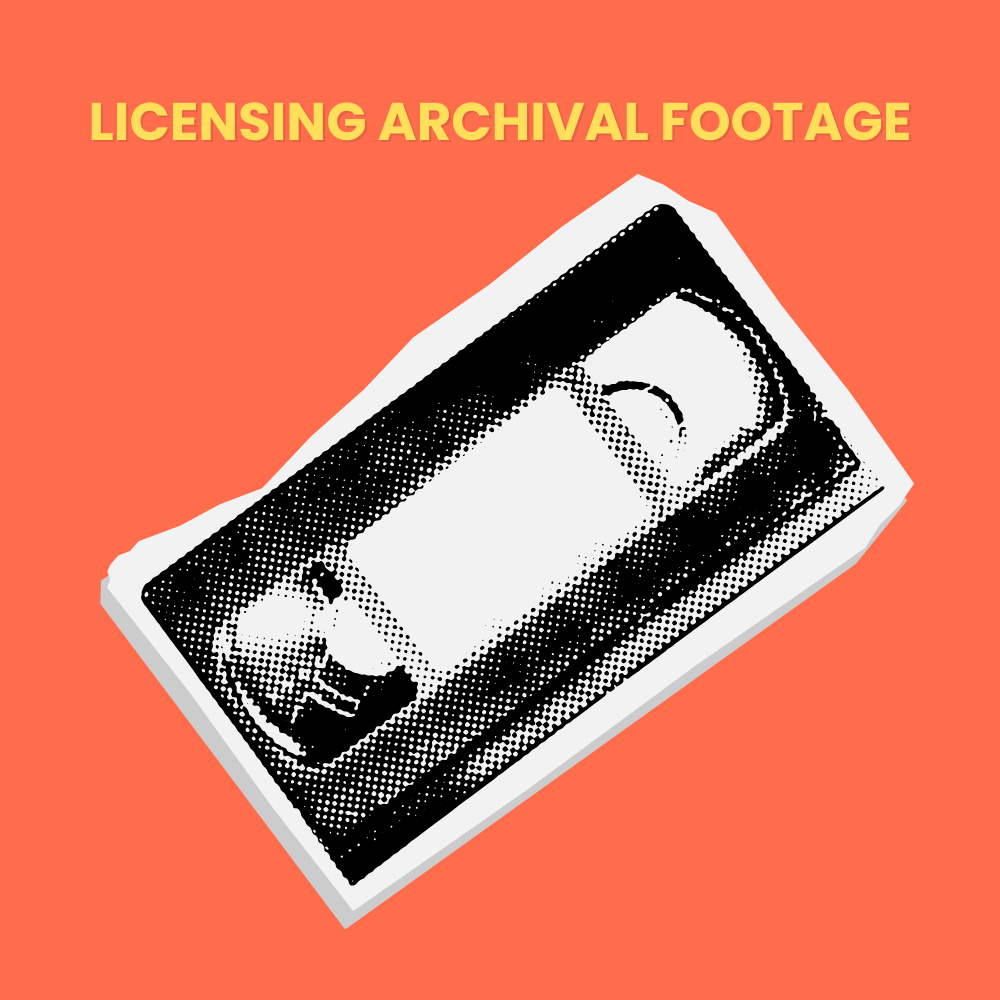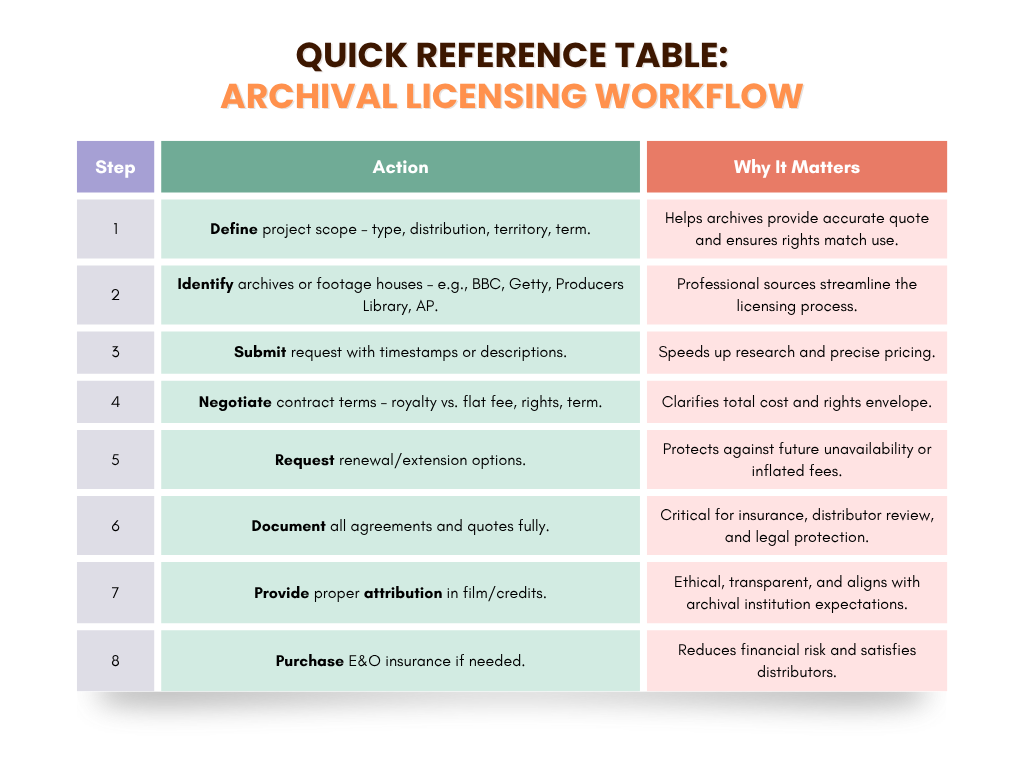Best Practices for Licensing Archival Footage (Beyond Public Domain)
When you're working on a film that relies on historical or found footage, public domain clips are a great starting point—but they're only part of the picture. Many of the most compelling archival materials are still protected by copyright and require formal licensing. In this post, we break down best practices for legally licensing archival footage beyond the public domain, helping filmmakers navigate rights, avoid costly mistakes, and tell powerful stories with confidence.
Best Practices for Licensing Archival Footage — A Guide for Filmmakers
1. Understanding Archival Licensing vs. Public Domain
Unlike public domain footage, archival footage often requires formal licensing and rights clearance because ownership remains with a third party.
Licensing typically involves fees tied to time-limited agreements, distribution territories (such as domestic vs. worldwide), platforms (streaming, broadcast, theatrical), and the number of uses (e.g., single event or ongoing).
2. Define Your Project’s Parameters First
Project type: documentary, feature, educational, streaming short, etc.—this shapes licensing needs.
Distribution format: specify whether your project is for festivals, broadcast TV, streaming, public display, educational use, or theatrical release.
Territories and term: decide if you need U.S.-only or worldwide rights, and whether rights extend in perpetuity or for a limited term (e.g. 5–10 years or festival only).
3. Research and Reach Out to Reputable Archival Sources
Prominent collections and licensing services include:
BBC Motion Gallery, Getty, Associated Press, Producers Library Service, CNN Collection, Imperial War Museum, Prelinger Archives and others listed in major stock footage directories.
Approach archives with clear requests, including descriptions, frame grabs, or timestamps, and any reference identifiers if available.
4. Negotiate Clear Terms and Know What You’re Paying For
License fees vary by rights scope: exclusive vs. non-exclusive, length of term, territories, media formats, and promotional usage.
Ask for right-to-extend options so future licenses aren't unexpectedly more expensive or unavailable.
Rare or high-profile clips (e.g. Zapruder film) may carry premium pricing.
5. Plan for Future Availability and Renewal Costs
Many agreements are time-limited; once expired, filmmakers may need to re-clear footage at higher costs or may lose access entirely—as happened with Eyes on the Prize when rights lapsed, preventing further distribution.
Consider long-term licensing or perpetual usage rights if you anticipate future revenue streams or archival preservation.
6. Fair Use ≠ Licensing (Usually)
Although fair use can allow unlicensed use in some documentarian contexts (e.g. commentary, criticism), it’s not a substitute for licensing messages or broadcast rights.
Many filmmakers choose licensing over fair use to avoid legal risk, even for small amounts of footage.
7. Attribution, Credits, and Documentation
Even if not legally mandated, crediting archival sources and content creators is best practice—it strengthens ethical transparency and supports archival institutions.
Maintain a clear chain of custody and documentation for all license agreements—from contact, quote, contract, and usage logs.
8. Risk Management & Insurance Considerations
When licensing critical materials, consider errors and omissions (E&O) insurance — many insurers now permit coverage even when relying on fair use, but licensed usage offers more certainty against litigation International Documentary AssociationCenter for Media and Social Impact.
Rights-clearance often includes legal review and proof of chain-of-title, which insurers and distributors may require.
9. Orphan Works & Permission Gaps
Archival content may be orphaned (i.e., copyright holders cannot be located). Fair use or proposed U.S. orphan works laws may help, but formal licensing is safest when viable.
Document your search efforts and attempts to contact rights holders in case clearance is contested.
Additional Tips & Industry Examples
Documentaries with tight budgets often clear rights only for necessary markets or platforms, rather than all global media, to save on costs—or license shorter clips or cheaper archives.
When possible, cleanup or transform archival footage (color correction, sound edits) can add creative value—but transformation doesn’t substitute for licensing unless the use is clearly fair use and fit the four‑factor test.
Institutional support (e.g. grants) may help filmmakers clear expensive rights for long‑term or educational distribution.


